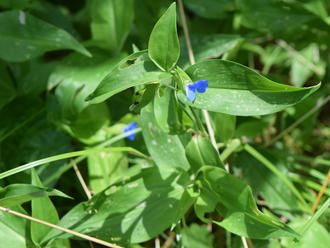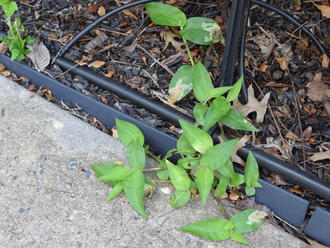Asiatic Dayflower (Commelina communis L.)
↑Range - Expand
| Legend | Color |
| Introduced | |
| Introduced or Not Present |
This tentative map is based on our own research. It may have limited data on Canada and/or Mexico, and there is some subjectivity in our assignment of plants as introduced vs. expanded. Read more in this blog post.
Although this plant occurs somewhere in each of these regions, it may only occur in a small part of some or all of them.
↑Related Plants
Several Commelina species occur in North America, both native and introduced; this species has the widest distribution of the introduced species, and extends the farthest north of any of the species, being the only Commelina in the northern part of its range.
Of the native species, C. erecta has the widest distribution and C. diffusa and C. virginica also are widely distributed, but all three have a more southerly distribution, although they overlap with this species over a wide area.
↑Links & External Resources
• Commelina communis (Asiatic Dayflower) | Illinois Wildflowers (About This Site)
• Commelina communis (Asiatic Dayflower) | USDA PLANTS Database (About This Site)
• Commelina communis | Go Botany (About This Site)
• Commelina communis | Biota of North America Project (BONAP) (About This Site)
• Commelina communis | NatureServe Explorer (About This Site)
• Commelina communis | Flora of North America (About This Site)
• Commelina communis | Missouri Plants (About This Site)
• Asiatic Dayflower | Maryland Biodiversity Project (About This Site)
• Commelina communis (Asiatic Dayflower) | Minnesota Wildflowers (About This Site)
• Commelina communis L. (Asiatic Dayflower, Common Dayflower) | Digital Atlas of the Virginia Flora (About This Site)




